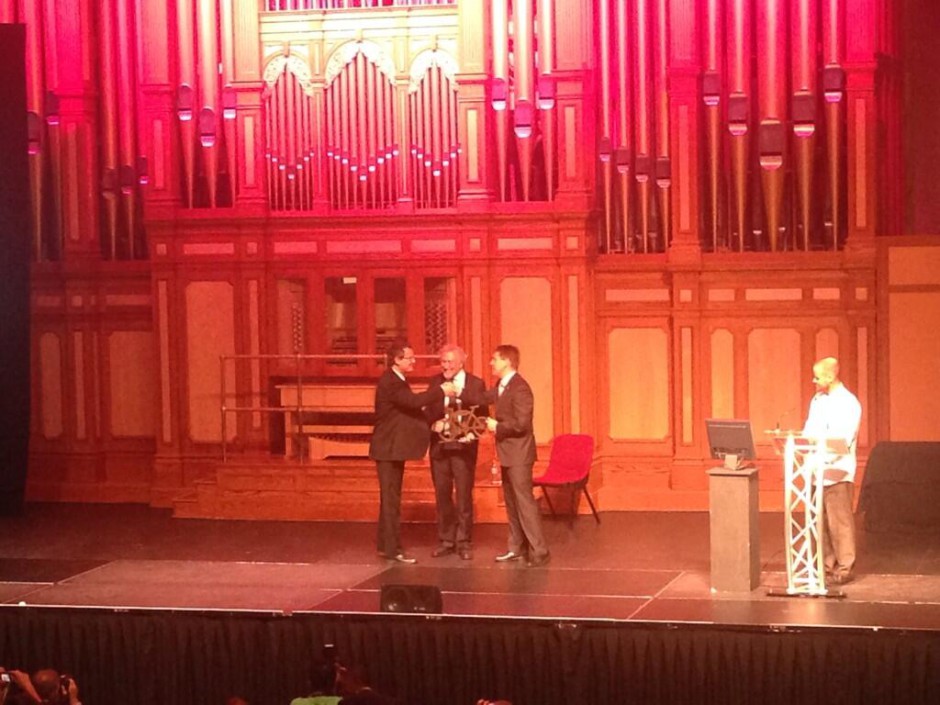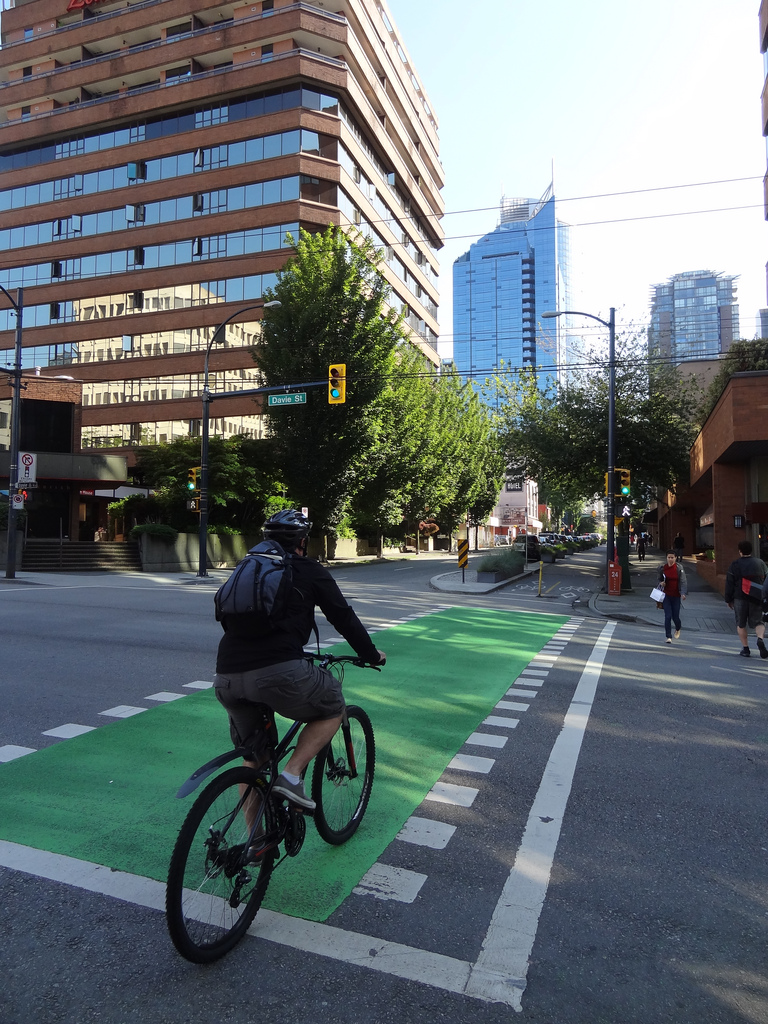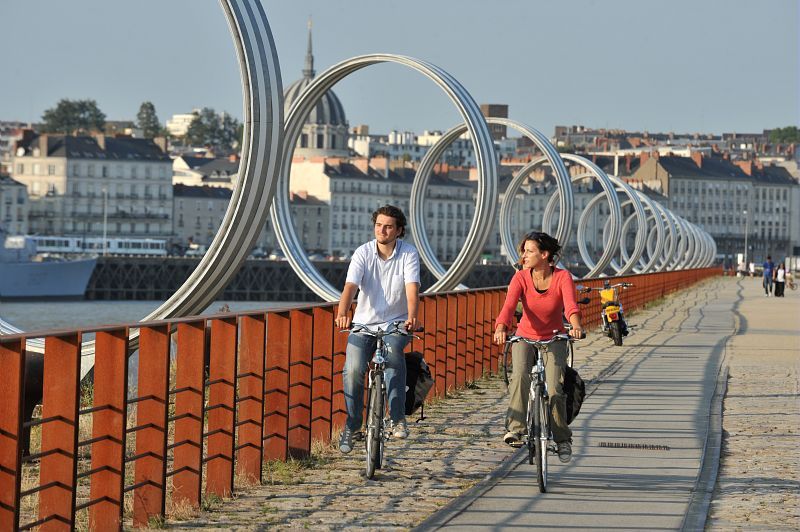
Velo-city 2014 Day 4 final round-up – Friday 30 May
The final day of the conference in Adelaide has come to a close, and we can safely say this year's edition can be hailed a great success. The wealth and variety of topics addressed, the stunning setting at the conference centre, the great side events that took place during the week... and of course, you. Delegates, participants, and everyone who has been following proceedings from their home on all five continents, using the #vcg14 hash tag and joining in on the debate. Dr Bernhard Ensink, ECF Secretary-General, officially closed the conference and ECF President Manfred Neun entrusted the conference organisation to Nantes, our next hosts for Velo-city 2015.
Here is a flavour of what took place on the final day of the conference:
- Handover for Velo-city 2015 Nantes
- Safe Cycling: healthy people, healthy communities
- Safe Cycling 2: A safer system by design
- Next destination: Nantes 2015
Handover from Adelaide to Nantes for Velo-city 2015
 The handover ceremony
The handover ceremony
The final act of VCG 2014 saw Manfred Neun from ECF and xxx from Adelaide hand over the Velo-city conference proceedings to xxx from Nantes. A sculpture is entrusted to host cities for a year and symbolises a bike. It had been given to Adelaide by Vienna last year, it will be given to Taipei from Nantes next year... And so the Velo-city adventure continues.
Already hailed last year as the sixth friendliest bicycle city in the world according the to the Copenhagenize index of Bicycle Friendly Cities, Nantes is actively pursuing its transformation into the most bike-centric city in world. As part of its commitment to increase bike use in the city and metropolitan area, Nantes’ express network is currently being developed. 6 kilometres are already completed on the North-South axis of the city and an extra 5 kilometres are to be inaugurated on a route spanning East to West this year.
This network is created to complete the already existing 470 kilometres of cycling infrastructure. No wonder the city was awarded the European Green Capital award for 2013! At the next conference attendees at Velo-city 2015 will be able to discover and appreciate the entire city on a bike! And the Châteaux de la Loire are only a bike trip away, along the famous Eurovelo route 6.
The city has seen its cycling rates double in the last four years, and along with these aforementioned infrastructural investments, it seems like participants of Velo-city 2015 conference will be able to learn a lot from the capital of the Pays-de-la-Loire region next year.
Safe Cycling 1: healthy people, healthy communities
 We know the helmet debate is raging, but what about the effectiveness of high-viz vests?
We know the helmet debate is raging, but what about the effectiveness of high-viz vests?
Terry Ryan chaired the sub-plenary session on Safe cycling on Thursday afternnon, which started with a presentation from Glen Koorey from the University of Canterbury in New Zealand. After a terrible spate of cycling fatalities in New Zealand the authorities began to put forward the idea that hi-vis jackets should be made mandatory in New Zealand (this despite the fact that almost all those killed were wearing them). So Glen decided to take a closer look. He found little correlation in the literature or accident data to suggest that there was a correlation between jacket wearing and better sighted cyclists. However he did find that there was evidence that what you wear makes no difference to the distance that drivers pass a cyclist (interestingly this did not apply if the cyclist wore a jacket resembling a police jacket!).
He added that the wearing of hi-vis jackets does seem to increase the perception of risk of cycling as a dangerous activity, with all the attending issues of making a mandatory jacket law a hindrance to cycling promotion in the same way that a mandatory helmet law can be seen. He urged jacket and non-jacket wearers to get beyond calling each other idiots and to remember that all cyclists no matter what they wear are making the sensible decision to cycle!
Trevor Shilton from the National Heart Foundation began by asking the question why cycling? One of the most important answers to that question is the health issue. Physical inactivity is the 4th major death attribute worldwide, however the other 5 out of 6 attributes such as obesity and high blood pressure were secondary effects of inactivity. So physical activity is essential to improving public health. There were however many other beneficial factors that need to be factored into the equation. The economic benefits with regards to the retail trade that is available to cyclists rather than motorists on busy streets; the local businesses, cafés and local areas, the products and bikes, the increase in worker productivity and reduction in absenteeism are all benefits of increased activities such as cycling, then there were also the social benefits of an increase in social health and social capital. However this needed commitment from the top political level. This he has achieved through his work at the UN member states and the follow up work at the WHO with the development of a global action plan.
However this took work and many different strategies to bring this about, including;
- Bringing changes to the built environment to change behaviour by adapting and changing the lived in environment
- Encouraging individual behaviour change
- Giving people the opportunity to participate in their cities
- Changing the practices of the professional who develop and build policies and cities
- And finally, having good advocacy to lobby and advocate for change
Tongchai Panswad from The Thai Health Promotion Foundation took us on a journey through the last decade or so of his work trying to bring more cycling and walking to Thailand. He too acknowledged the ability to kill many birds with one stone by incorporating cycling into everyday Thai life. He spoke of the ten years campaigning and activity that had little effect and the support he received from ECF, Bernhard’s trip to Thailand and the ideas from a decade’s worth of Velo-city conferences of providing advice and ideas to the project. He realised that Bangkok cannot yet be a bicycle city but can become a bikeable city! He also realised that he has to have different strategies and methods in different areas of Thai life, with urban/rural and city centre/suburban requiring different approaches and strategies. He now strives to make cycling an economically viable mode of transport and is having success incorporating cycling into everyday activities and especially businesses.
Safe cycling 2 - A safer system by design
Another safety session was held on Friday and was chaired by Jeremy Wooley at the town hall.
The first speaker was Simon Kennet from Greater Wellington Regional Council in New Zealand. He was interested in looking at the actual bike and the roadworthiness of bikes to see if there were any safety issues that could be improved. This was prompted by statistics that 33% of New Zealand cycling fatalities and 80% of cycling crashes had no involvement with other vehicles and that 58% were due to cycling error. In fact in Wellington the risk of cycling is higher than that of motorcycling.
He wanted to look at the bike as a way of incorporating this into the Vision Zero/Safe Systems approach to road safety. This could contribute to bikes following the same trajectory as motor vehicles that have been continuously getting safer and safer year on year, whereas bicycle technology has not really changed that greatly.
He claimed that there were limited standards applied to bicycles around the world and that many New Zealand bikes were unsafe often with skinny tyres, drop handles and poor lighting. He wanted better standards and regulations to push the industry into newer innovative designs. For example better anti-skid brakes, dependable tyres, and suspension and better lighting.
There was concern, in the Q and A that this was putting the onus rather on the cyclist and cycle, that the usual standard of bicycle in safe cycling countries usually had a fleet of older bikes (NL & DK for example).
The next speaker was Tien Pen-Hsu from Taiwan National University. In contrast to New Zealand, in Taiwan 90% of cycling accidents were with motorised vehicles, with 12,708 bicycle crashes in total last year; 48% at junctions. This was often due to conflicts between motorbikes and cyclists at intersections and junctions, and particular at right turns. His research looked at these intersections to find the risk and solutions to the problem.
18 intersections were chosen for study, a risk model was built, and a questionnaire survey done. This resulted in new design guidelines for intersections. The major sources of conflicts were increased when with right turn but also left turn motorised vehicles. Risk was decreased on intersections with an exchange lane for motorised vehicles and where a refuge island was present at cross junctions. There was also increased risk in junctions where motorbikes and scooters were able to mix with bikes in the kerb side lane and/or with low space for bikes. The questionnaire (698 respondents at 18 intersections) concluded that the most important safety aspects were better bike facilities; traffic volume and bike volume. A two stage turn for bikes was put forward as a solution which it is estimated that a 70% accident reduction can be achieved.
Finally Anja Kroegop introduced a promotional and safety campaign in Auckland to develop cycling by increasing the visibility of cycling, promote safer cycling and to keep people cycling once on the bike. The increased visibility came with a booklet and media events. The campaign promoted safe and considerate behaviour with advertising and local campaigns. Bus drivers were invited to travel around the city on trial bikes to experience the road from a bike point of view. This was backed up by communications engagement around schools and workplaces. Training courses were also rolled out to train people how to try to be safe on the roads, and how to fix their bikes. The expectation is to get up to 10.000 participants involved.
extra item
Insert photo here
Insert text here
- Log in to post comments
Contact the author
Recent news!
Upcoming events
Contact Us
Avenue des Arts, 7-8
Postal address: Rue de la Charité, 22
1210 Brussels, Belgium











